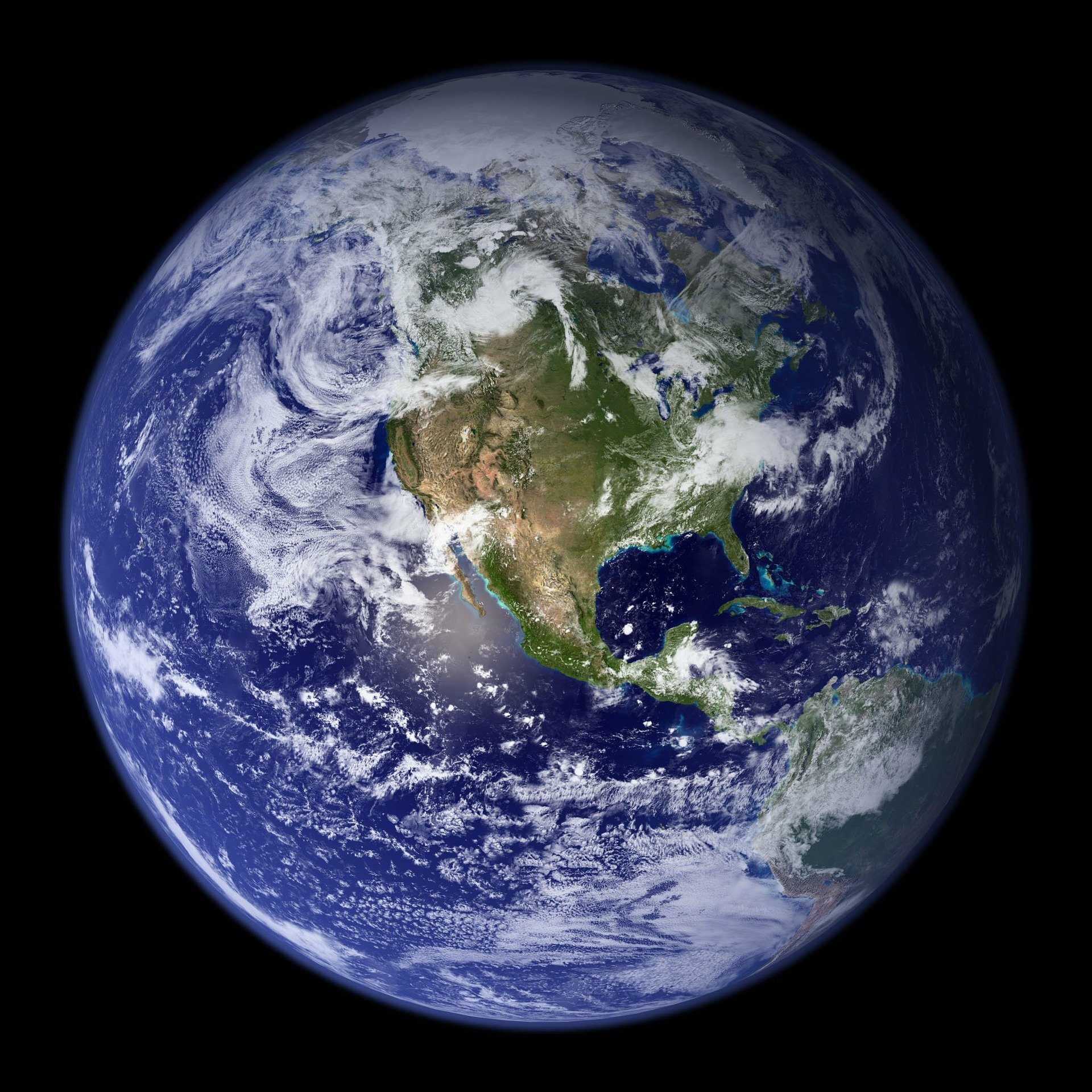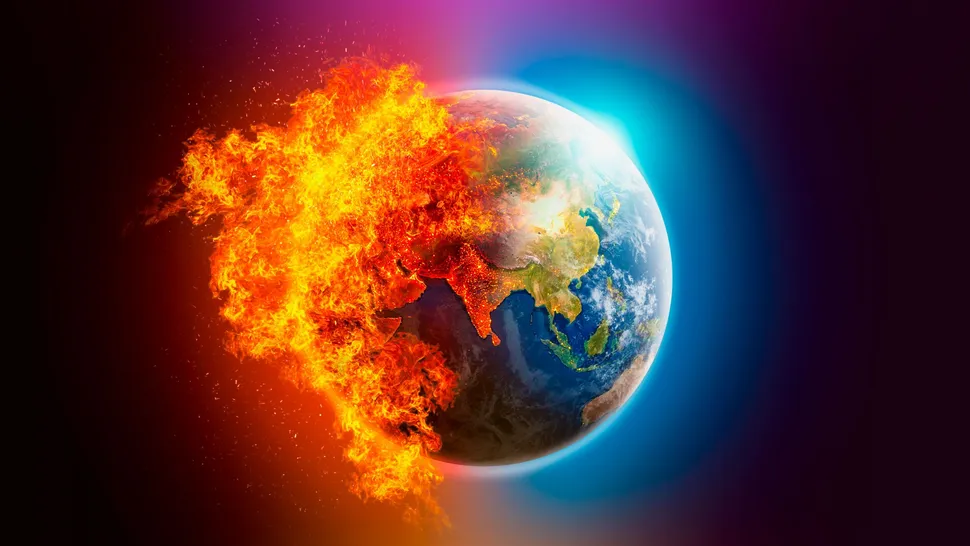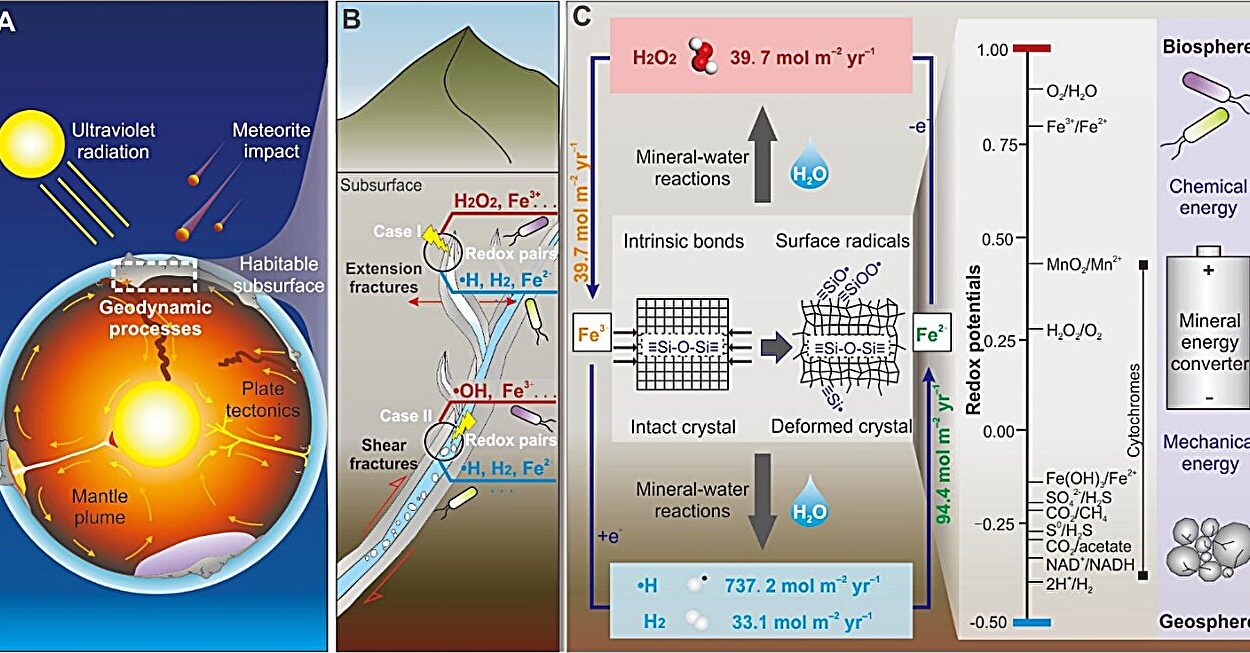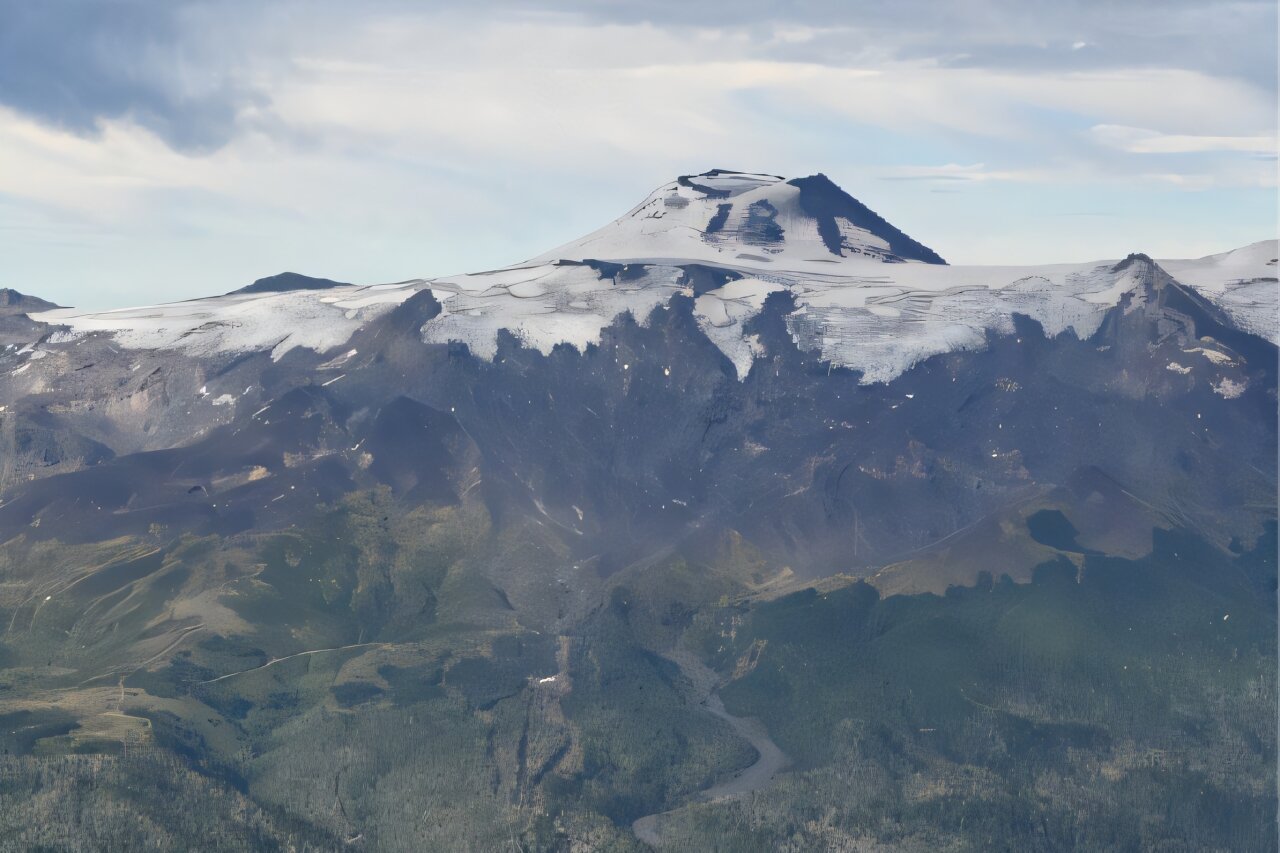Beneath the stars, our planet spins. Quietly, steadily, without pause. Earth rotates once every 24 hours, a motion so seamless we barely feel it. But while the rotation is silent and unseen, its effects are everywhere—in the whisper of a breeze, in the fury of a hurricane, in the rhythm of the seasons. It is a cosmic ballet, choreographed by physics and performed across sky and sea.
To many, weather might seem like a product of clouds and sunlight, of humidity and heat. But peel back the layers of any thunderstorm or monsoon, and you will find something even more fundamental. Earth’s rotation, a 4.5-billion-year-old spin, is one of the most powerful and subtle forces shaping our atmosphere. It sculpts the jet streams that direct our rain. It curves the paths of trade winds that carried ancient ships across oceans. It even influences the formation of cyclones that sweep across tropical seas.
The story of how Earth’s rotation affects weather patterns is one of elegance and complexity. It’s a tale of invisible forces, global patterns, and the remarkable interconnectedness of our living planet.
A Planet in Motion
To understand the impact of Earth’s rotation, we must first grasp the scale and nature of the spin itself. Earth rotates from west to east, completing a full turn every 23 hours, 56 minutes, and 4 seconds—what scientists call a sidereal day. At the equator, the surface of Earth is moving at a speed of about 1,670 kilometers per hour (1,038 miles per hour). Yet, at the poles, that surface speed is effectively zero.
This spinning motion arises from the conservation of angular momentum. When our planet formed from a swirling disk of gas and dust, it inherited the rotational motion of the cosmic cloud. And like a figure skater pulling in their arms to spin faster, Earth retained its spin as it coalesced into a sphere.
But Earth’s rotation isn’t just a mechanical fact—it’s a dynamic force. As the planet turns, it drags the atmosphere with it. But because the atmosphere isn’t rigid, it responds in complex ways. The result is a range of weather phenomena that would be impossible on a stationary planet.
The Coriolis Effect: The Sky’s Hidden Curve
Perhaps the most crucial way Earth’s rotation affects weather is through the Coriolis effect—a force that seems imaginary, but its fingerprints are found in every wind pattern on the globe.
Imagine you’re standing at the equator and you toss a ball directly north toward the pole. Because the equator is spinning faster than the poles, the ball carries with it that higher rotational velocity. As it moves north, it will appear to veer to the right, not because of any actual curve in its motion, but because the ground beneath it is rotating at a slower speed. This apparent deflection is the Coriolis effect.
In the Northern Hemisphere, the Coriolis effect causes moving air to veer to the right; in the Southern Hemisphere, to the left. This subtle twist transforms what would be straight-line winds into graceful spirals and curved currents. It’s the reason why hurricanes spin counterclockwise in the north and clockwise in the south. It’s why trade winds blow from the northeast in the Northern Hemisphere and from the southeast in the Southern Hemisphere.
Without Earth’s rotation and the resulting Coriolis effect, winds would simply move from high-pressure areas to low-pressure areas in straight lines. The atmosphere would be simpler, perhaps duller, but it would also be alien to what we know. The chaos and beauty of our weather come from that ever-turning globe.
The Great Atmospheric Conveyor Belts
Step back and view Earth as a whole, and the atmosphere reveals itself as a vast, complex engine. Warm air rises at the equator, where solar radiation is most intense. As this air ascends, it cools, moves toward the poles, and sinks in subtropical zones, creating massive circulation cells called Hadley cells. These cells drive the trade winds and define the planet’s climate zones.
But here again, rotation makes all the difference. Instead of a single, symmetrical circulation from equator to pole, Earth’s spin fragments this into three major cells in each hemisphere: the Hadley cell (near the equator), the Ferrel cell (in mid-latitudes), and the Polar cell (near the poles).
These rotating convection systems don’t operate in isolation. They’re interconnected like gears in a global machine. The result is a world where equatorial air travels westward across the tropics, bringing rains to the Amazon and monsoons to South Asia. Meanwhile, air at mid-latitudes spins eastward, forming the roaring westerlies that shape the weather of Europe and North America.
The planet’s rotation weaves these cells together, creating the global wind belts that define Earth’s climate and set the stage for all weather patterns.
Jet Streams: Rivers of Wind in the Sky
High above the surface, at the boundary between atmospheric cells, lie jet streams—narrow bands of fast-moving air that snake around the globe like rivers in the sky. These winds, often traveling at over 160 kilometers per hour (100 miles per hour), play a crucial role in guiding storms, influencing temperatures, and shaping seasonal weather patterns.
The most prominent of these is the polar jet stream, found between the Ferrel and Polar cells. It owes its existence to the temperature contrast between cold polar air and warmer air to the south—but its speed and direction are shaped by Earth’s rotation.
Because of the Coriolis effect, jet streams don’t flow north to south. Instead, they twist and meander from west to east, creating ridges and troughs that can lock weather systems in place. When the jet stream dips south, it can bring Arctic air deep into temperate zones, causing cold snaps and snowstorms. When it shifts north, it can lead to heatwaves and droughts.
Jet streams are also key to understanding extreme weather events. Their patterns can become “blocked” or stagnant, leading to prolonged periods of rain, heat, or cold. Earth’s rotation ensures that these winds never move in simple paths but instead dance in an ever-changing rhythm.
Storms Born of Spin: Cyclones and Anticyclones
Perhaps nowhere is the influence of Earth’s rotation more dramatic than in the birth of cyclones. These giant weather systems—spinning vortexes of wind and rain—are among the most powerful forces in nature. And at their heart lies the Coriolis effect.
Tropical cyclones (called hurricanes in the Atlantic, typhoons in the Pacific) begin as clusters of thunderstorms over warm ocean waters. As moist air rises and cools, it creates a zone of low pressure at the surface. Air rushes in to fill this void—but thanks to Earth’s spin, it does so in a spiral.
In the Northern Hemisphere, this inflowing air curves to the right, forming a counterclockwise rotation. In the Southern Hemisphere, it spirals clockwise. Without Earth’s rotation, these storms would still bring rain—but they wouldn’t swirl into the organized, massive systems capable of reshaping coastlines and altering global weather patterns.
Even smaller-scale weather systems are shaped by spin. Anticyclones, which bring clear skies and calm weather, rotate in the opposite direction of cyclones. In both cases, rotation is the invisible puppeteer pulling the strings.
Seasonal Shifts and Solar Geometry
While Earth’s rotation affects daily weather patterns, its tilt and revolution around the sun determine the seasons. Yet even here, rotation plays a role. As Earth orbits the sun, its axis remains tilted at about 23.5 degrees. This tilt, combined with the rotation, creates the varying angles of sunlight that define seasons.
But there’s more. The rate of rotation subtly affects how quickly temperatures change from day to night, from summer to winter. It influences the timing of sunrise and sunset, the duration of twilight, and the strength of diurnal heating, especially near the equator.
During solstices and equinoxes, rotation and axial tilt together produce phenomena like the midnight sun near the poles or the equal days and nights at the equator. These astronomical events, while cosmic in scale, are intimately connected to the weather patterns we experience on the ground.
Ocean Currents and the Atmospheric Mirror
The story doesn’t stop at the sky. Earth’s rotation also affects ocean currents, which in turn shape weather patterns on a global scale. Much like atmospheric winds, ocean currents are deflected by the Coriolis effect. This deflection contributes to the formation of giant gyres—rotating ocean systems that distribute heat across the planet.
The Gulf Stream, for example, carries warm water from the Gulf of Mexico across the Atlantic, moderating the climate of Western Europe. Meanwhile, the cold California Current keeps the U.S. West Coast cooler than other regions at similar latitudes. These currents are Earth’s thermal arteries, transporting energy and influencing rainfall, storm tracks, and climate zones.
Just as wind shapes water, so too does water shape wind. Evaporation from warm ocean currents fuels storm systems. El Niño and La Niña events—periodic disruptions in Pacific Ocean temperatures—can alter weather patterns worldwide, triggering droughts, floods, and shifts in monsoon cycles. These events are amplified and modulated by the way the planet spins, setting the rhythm for global climate variability.
The Butterfly Effect and Rotational Chaos
In the 1960s, meteorologist Edward Lorenz introduced the world to chaos theory, famously stating that the flap of a butterfly’s wings in Brazil could set off a tornado in Texas. His work, based on early weather models, revealed that the atmosphere is incredibly sensitive to initial conditions.
Earth’s rotation adds another layer of complexity to this chaotic system. Small changes in rotational speed or axial tilt—even over millennia—can alter climate regimes. While these changes are subtle and slow, they remind us that weather is not just local or linear. It is a global dance of energy and motion.
And because we live on a spinning sphere, that dance will always have a twist.
Rotation and the Future of Climate
As we confront the growing challenges of climate change, understanding the role of Earth’s rotation becomes even more vital. Rising temperatures can alter pressure gradients, shifting jet streams and changing the behavior of atmospheric cells. These shifts may, in turn, cause some regions to become wetter, others drier, and all of them more vulnerable to extreme events.
Some scientists believe that climate change is already affecting the polar vortex—a cold, spinning column of air over the Arctic. As the Arctic warms, the vortex weakens and wobbles, sending icy air further south. Similarly, warming oceans may fuel more intense tropical cyclones, with rotational dynamics helping to focus their power.
In a rapidly changing world, Earth’s rotation remains a constant. But the way that rotation interacts with a warming atmosphere is likely to produce surprises—and perhaps more turbulence—on our spinning blue planet.
Conclusion: The Beauty of a Turning World
When you feel the wind brush your face, or watch clouds race across the sky, remember this: you are not standing still. You are hurtling through space on a rotating sphere, wrapped in a thin veil of air that dances to the rhythm of planetary motion.
Earth’s rotation is the silent architect of our weather. It bends the wind, sculpts the clouds, and spins the storms. It ties together physics and poetry, chaos and order, the local and the global.
In every thunderstorm and gentle breeze, in every sunlit morning and snowy night, the turning of the Earth whispers its influence. It is a force we cannot see, but it shapes the world we live in.
And so, as long as the Earth spins—and it always will—our weather will continue to tell the story of a planet in motion, alive with energy, curved by forces invisible, and united under one rotating sky.






